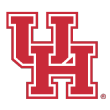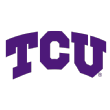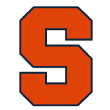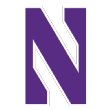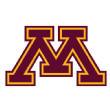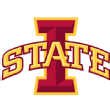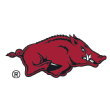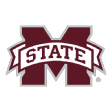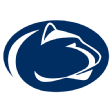NFL draft 2023: Best prospects at 53 different skills
ESPN PLUP $ MATERIALWe love talking about traits leading up to the NFL draft. Accuracy, arm strength and mobility for quarterbacks. Elusiveness, physicality and speed for offensive skill positions. Power and agility for linemen. Burst, bend and range for front-seven defenders. And ball-hawking and instincts in the secondary. Prospect scouting reports are filled with detailed breakdowns in these departments. But who is truly the best in the 2023 class at each individual skill?
I put together my annual list of the best at everything -- the skill superlatives of this year's draft class -- for 53 different categories. Where do top prospects separate themselves? Which quarterback displays the best arm talent? Which wideout is the top route runner of the class? Who is the hardest-hitting defensive back or the most powerful edge rusher? I picked the best prospect in 53 separate areas and capped it all off with three sleepers who have a lot of upside.


Most accurate passer: C.J. Stroud, QB, Ohio State
Stroud completed 69.8% of his passes over 25 career starts at Ohio State, and he threw a catchable pass on 79.4% of his attempts last season (19th-best in the country). With a natural, easy motion, Stroud can deliver the ball with precise placement at the second and third levels of the field, using both velocity and touch to hit his targets. He's a pocket passer with enough mobility to get to the edges or escape pressure, and we've seen Stroud throw the ball with high-level accuracy both on the tape and during his combine/pro day workouts.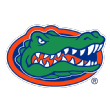
Best arm talent: Anthony Richardson, QB, Florida
With a rare physical tools at 6-foot-4 and 244 pounds, Richardson can attack all levels of the field with his big-time arm strength. The ball simply explodes out of his hand, which puts him in a position to throw over the top of the defense or attack tight windows on both middle-of-the-field and boundary concepts. Yes, he needs to work on the accuracy part of it, but he can drive the ball and throws rockets. His 9.9 air yards per attempt ranked 16th in the FBS last season, and 46 of his 176 completions were on passes thrown at least 15 yards downfield.
Best mechanics: Hendon Hooker, QB, Tennessee
With detailed and controlled footwork in his drops and a clean, over-the-top release, Hooker is a refined thrower with the necessary tools to produce from the pocket. He plays tall in the pocket and is at his best on rhythm concepts, which match well with his efficient upper- and lower-body mechanics. Hooker played in 11 games last year before a torn ACL ended his season.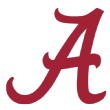
Best field vision: Bryce Young, QB, Alabama
With two years of high-level production in a pro-style system at Alabama, Young has the ability to decipher defensive looks pre-snap and the accelerated vision to read it out post-snap. This allows Young to play within rhythm as a passer, while also taking the throws that are available based on late defensive rotation. He's a pro-ready quarterback given what he was asked to do in Bill O'Brien's system. And his field vision really comes into play when he's pressured; he was 13th in QBR under duress (30.1) and third outside the pocket (95.7) last season.
Best pocket presence: Bryce Young, QB, Alabama
Young is an easy, calculated mover in tight quarters and plays with excellent poise when the walls start to close in around him. His eye level stays consistent, and Young has a great feel for when to slide, climb and create space for himself inside the pocket. I see similarities to the college tape of Joe Burrow; Young can move to reset his throwing window while still staying on schedule. And that's a key trait to producing in the NFL.
Quickest release: Will Levis, QB, Kentucky
Levis has multiple high-level traits -- including his arm talent and mobility -- but it's the quick and compact release that stands out. That smooth delivery allows Levis to throw from multiple arm slots and platforms, getting the ball out with both speed and velocity. And we see this often with Levis on drive throws to the second level of the field. He can rip it.
Best scrambler: Anthony Richardson, QB, Florida
Richardson can produce on designed carries or second-reaction scramble attempts, finding escape doors to get loose. He rushed for 654 yards this past season, including four carries of at least 45 yards, and his 6.4 yards per carry led all quarterbacks by a significant margin. Richardson is a game-breaker in the open field, with 4.43 speed, ball-carrier vision and the power to run through contact. And those traits as a runner will impact how opposing defenses game plan against Richardson in the pros.

Best power/contact balance: Bijan Robinson, RB, Texas
Robinson broke 37 tackles and averaged 3.9 yards after first contact last season, both top-15 numbers in the FBS. With 54 more evaded tackles, he forced 91 missed tackles overall -- which led the nation. In either gap or zone schemes, Robinson can drop the pads or bounce off defenders to tack on extra yardage. He's an all-purpose playmaker, too. And I think he's the best overall prospect in this class.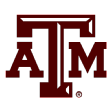
Best home run speed: Devon Achane, RB, Texas A&M
Achane plays big despite his 5-foot-9, 188-pound frame. He's decisive on downhill schemes and knows how to find daylight. And the speed is real. Achane dropped a 4.32 in the 40 at the combine, fastest among all the running backs. He's an explosive-play runner when he bounces the ball to the perimeter, and it's no surprise that Achane posted 11 rushes of 20 yards or more in 2022, which ranked inside the top 25.
Most sudden: Eric Gray, RB, Oklahoma
Gray can set up and shake defenders using his sudden change-of-direction traits and short-area speed to drive through traffic. In 2022, Gray evaded 44 tackles, second in the nation to only Bijan Robinson. And while he doesn't have the long speed to rip off home runs, Gray has a running style that translates to first-down carries, an area he finished tied for sixth nationally last season.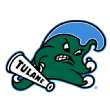
Most elusive: Tyjae Spears, RB, Tulane
An angular runner, Spears elevates his game once he hits the second level, using both his vision and cutting ability to slice through defensive pursuit angles, which leads to explosive-play runs. Last season at Tulane, Spears notched 35 rushes of 10 yards or more -- including four in the Cotton Bowl win over USC -- and averaged 6.9 yards per carry. And he finished with 34 evaded tackles, tied for ninth most in the country.

Best route runner: Jaxon Smith-Njigba, WR, Ohio State
Smith-Njigba posted a lightning quick 6.57-second three-cone time and a 3.93-second short shuttle at the combine. He's a terrific lateral mover with route skills and short-area juice, and he can be deployed out of the slot in the pro game. JSN will shake defenders and uncover, and he can press down the field on slot fades and seams. Smith-Njigba played in only three games this past season because of injury, but the 2021 tape points to his ability to produce. During that season, he averaged 4.1 yards per route, most in the country.
